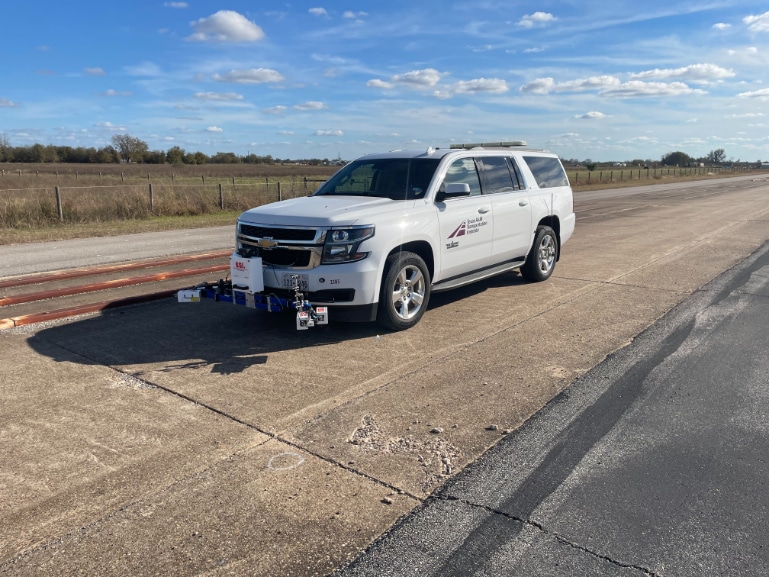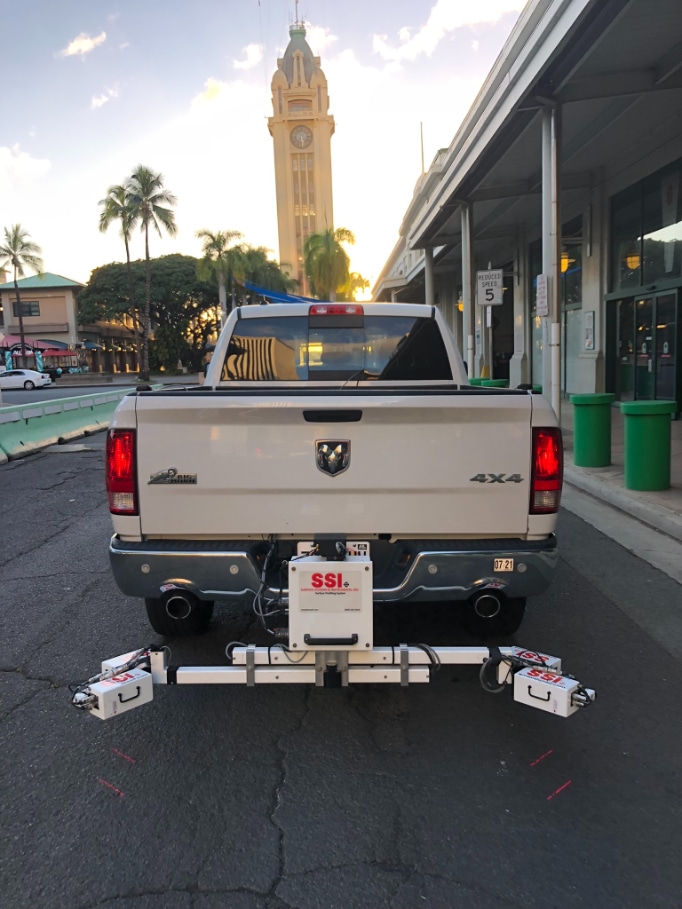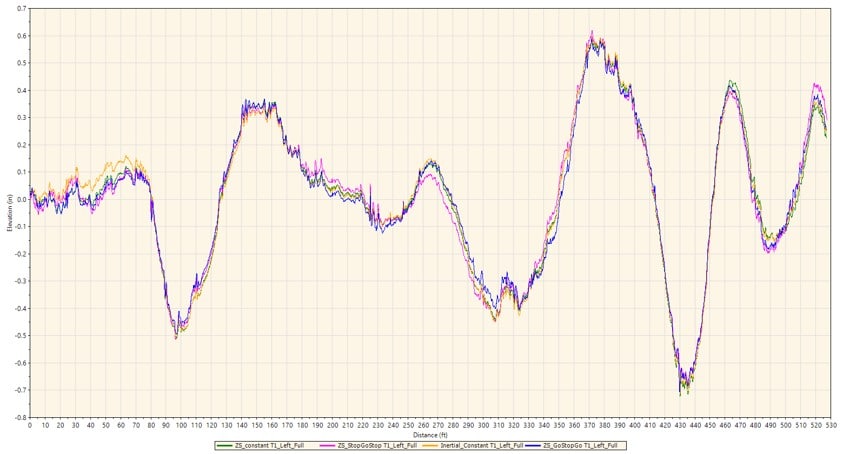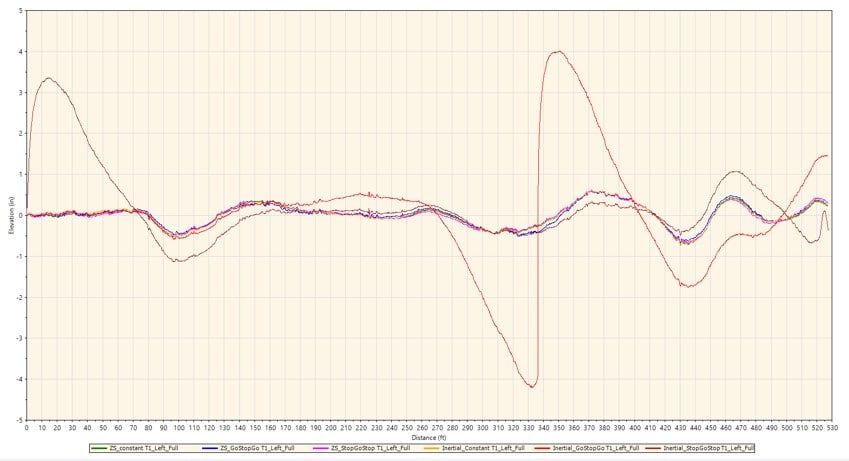Mississippi NCHRP 10-106 Testing Shows Repeatability of Zero-Speed Inertial Profiling
BY Surface Systems and Instruments Inc.

Surface Systems and Instruments Inc. (SSI), Larkspur, California, collected profile data under multiple conditions to replicate acceleration, deceleration and stopping during a data collection rodeo for the National Cooperative Highway Research Program (NCHRP). The scenarios selected tested the accuracy and repeatability of the Zero-Speed Inertial Profiler under various conditions.
The SSI Zero-Speed inertial profiler uses multiple sensors to collect data over a range of 0-100 miles per hour (mph). This eliminates the collection speed floor and speed dropouts, which can introduce Interntional Roughness Index (IRI) error for project and network level roads. The Zero-Speed Inertial Profiler is designed to eliminate the noise of accelerometer drift over time while collecting an accurate profile at any speed, even through stoppages.

The SSI Zero-Speed Inertial Profiler can be affixed to the front or back of a vehicle for pavement condition measuring at speeds from 0-100 miles per hour. Both photos courtesy of SSI
NCHRP 10-106 testing was created to learn more about the AASHTO r56 equipment certification. SSI took this opportunity to collect three stop-and-go scenarios plus additional constant speed runs with traditional inertial profilers. All runs were analyzed for repeatability and accuracy against well-known walking-speed inertial profile reference data. The three scenarios—plus constant-speed collections—were:
Six low speed runs at 10 mph for analyzing the Zero-Speed system as a reference device;
Six Stop-Go-Stop runs (with no run up or run out, accelerate to 30 mph during collection);
Six Go-Stop-Go runs (start collection at 50 mph, stop in middle of track, accelerate to 30 mph to end); and
Twelve constant speed traditional inertial profiler collections (six at 50 mph, six at 30 mph).
The requirements for an inertial profiler to be compliant with American Association of State Highway Transporation Officials (AASHTO) r56 are 92% repeatability and 90% accuracy. The Zero-Speed device achieved a passing certification score under AASHTO r56 for each of the above scenarios (see Table 1 for data).

Table courtesy of SSI
The fourth, constant-speed scenario was collected in the left wheel path (LWP) on the second day of testing; the walking profiler reference data was collected on the first day. The inertial profilers and the Zero-Speed had IRI values of around 90 inches per mile where the walking profiler had a reference IRI of 94 inches per mile. The surface may have changed, which may explain the discrepancy between the LWP accuracy and the first-day, right wheel path (RWP) accuracy of almost 98%. This may highlight the importance of collecting reference data at the same time or as close to the time of the certification as possible.
Reference Device Label
For a device to be considered a “reference device,” the system must have three runs that are at least 98% repeatable against itself. Most department of transportation (DOT) certification tracks will make multiple runs in each wheel path with their walking reference device and compare them for repeatability to confirm the runs are similar to each other. Repeatability in the Profile Viewing and Analysis (ProVAL) app is a function of profile amplitude and trends. It considers more than the ride value number so that the elevation profile is the driving comparison metric.
The Profile Viewing and Analysis (ProVAL) engineering software application is a product sponsored by the U.S. Department of Transportation’s Federal Highway Administration (FHWA) and Long-Term Pavement Performance Program (LTPP). It’s designed to let users view and perform analyses including, but not limited to: ride statistics, profilograph simulation, profiler certification, smoothness assurance modeling (SAM), and so on.
The SSI Zero-Speed device achieved reference level repeatability and introduced a concept of using the Zero-Speed device as a faster way to collect baseline reference profiles for certification tracks. More data is required to progress this methodology, but the data for the Zero-Speed as a reference device was proven on the Mississippi track with the NCHRP 10-106 project.
The benefit of using the Zero-Speed system as a reference is the speed of collection; it may reduce reference collection time by an order of 15. The Zero-Speed data was collected at 10 mph (15 feet per second) compared to a walking profiler, which usually collects under 2 feet per second. The SSI Zero-Speed system also cancels vehicle motion and dynamics, lessening the susceptibility of the system to operator-induced error.

Table courtesy of SSI
This testing shows the SSI Zero-Speed Inertial Profiler is a compliant method of collection data throughout the speed range of 0-100 mph and through stoppages. The Zero-Speed system can also be used to collect data without run up or run out distance; a highlight for tightly constrained projects such as airfield paving.
For more information, visit https://www.smoothroad.com.

Plot of Zero-Speed Profile Data Paired with Constant Speed Runs. All graphs courtesy of SSI

Plot of Traditional Inertial Profiler Runs with Accelerometer Drift from Low Speeds

Scenario 1. Plot vs Speed: Zero-Speed Reference Profiler Collection

Scenario 2. Plot vs Speed: Stop-Go-Stop Collection (No Run Up or Run Out)

Scenario 3. Plot vs Speed: Go-Stop-Go Collection

Scenario 4. Plot vs Speed: Constant Speed Zero-Speed System Collection
